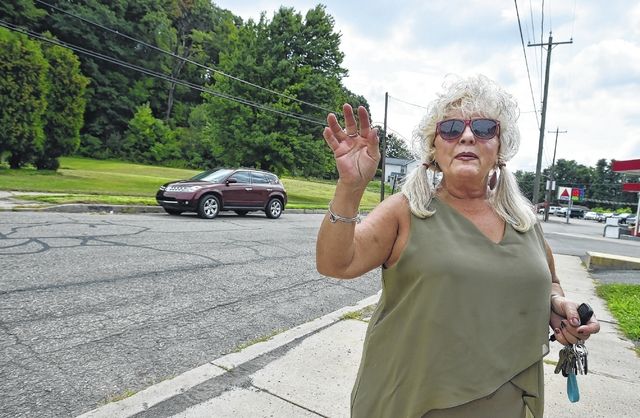Click here to subscribe today or Login.
Hundreds of houses and buildings have been erased from Luzerne County’s flood-prone communities through government buyouts since the record Susquehanna River flood tore through much of the Wyoming Valley six years ago today, officials say.
“It’s a lot of grass now,” said Shickshinny Mayor Beverly Moore, who counts her Canal Street home as one of nine remaining in a neighborhood that had 50 structures when the river rose Sept. 7, 2011, and swelled to a record 42.66 feet.
“The buyouts have truly changed the landscape of the town.”
Jim Brozena, a West Pittston engineering consultant who has been handling buyout paperwork for 10 municipalities in the county, estimated the demolition tally will reach more than 300 by the time a pending round of projects is completed. The lion’s share of leveled structures have been in Shickshinny and Conyngham, Jenkins and Plymouth townships, he said.
Municipalities must agree to own and maintain buyout properties and keep them undeveloped.
Most of the properties torn down had flooded multiple times, creating a risk for both occupants and emergency workers, Brozena said.
“With the things going on with (Hurricane) Harvey in Texas right now, I think everyone can appreciate the effort going into making sure people are safe,” Brozena said. “We will no longer have to worry about these properties.”
River Road in Jenkins Township near the Eighth Street Bridge and other stretches and neighborhoods have been dramatically altered with the disappearance of familiar structures, he said.
“Shickshinny is very different. When you look towards the river side of Route 11, it’s completely open for the most part,” said Brozena.
He is optimistic communities will find ways to reuse at least some of the cleared land without violating no-development mandates.
Plains Township, for example, created a public fishing area and boat launch for kayaks and other small vessels on land previously occupied by flood-prone houses in the Plainsville section off North River Street.
Athletic fields, community gardens, open air pavilions and camping areas are other possibilities that have been suggested for buyout properties.
“There are some interesting things that are starting to happen to make them not just vacant lots and make them a part of the fabric of those communities,” Brozena said.
In Shickshinny, the large field remaining after demolitions has been used for a car show and will be part of the fire company’s carnival, said Mayor Moore.
The land may be used for recreation that could attract visitors who support businesses that opted to rebuild or move into the borough after the record flood, including Five Mountain Outfitters, which rents canoes and kayaks and offers guided river tours, she said.
Conyngham Township Supervisor Ed Whitebread said approximately 38 properties were torn down there since 2011, and another 20 demolitions are pending. Many are in a former coal mining community of bungalows in the Mocanaqua section.
“It’s sad seeing all these people go, and it’s definitely a hardship to the township losing so much of our tax base,” Whitebread said.
Beefing up the township’s public works department was necessary to handle the maintenance of additional municipal-owned properties, he said.
While he won’t rule out the possibility of recreational uses for the cleared land, Whitebread said the more pressing focus will be on attracting new construction on higher ground in the Pond Hill and Wapwallopen sections.
“We need to do work to bring the roads accessing this land up to specifications, and we will address that.”
Plymouth Township Supervisor Gale Conrad said her municipality’s tally of demolished structures since 2011 will reach 50 to 55 after an upcoming buyout phase is completed.
The demolition count is between 100 and 120 during the last decade to 15 years, she said, noting the township also experienced flooding in 2004, 2005 and 2006.
“We are fortunate because we had so many buyouts. Everyone who is still there had two — if not three or more opportunities — over a good period of years to get out,” explained Conrad.
Township officials have no plans for recreational use of the vacant land because the parcels are in a patchwork among structures that will remain — not adjoining to create one large blank canvas.
Those not familiar with the impacted neighborhoods wouldn’t blink an eye because the lots now appear to be part of extended yards, she said.
“It is very different from what it was a few years ago, but you had to have known what it looked like before to see that,” said Conrad.
She’s confident new development in hilly and mountainous parts of the township will offset real estate tax revenue lost from the demolition of flood-prone structures.
Conrad admits she gets emotional when she bumps into township natives who accepted buyouts but still miss their old homes and neighborhoods.
“It’s sad to see all the folks go, but I’m glad they had the opportunity to receive money from the government to relocate, have a safer life and not have to worry about floodwaters.”






